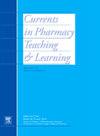药剂学三年级学生个人与专业发展课程中冒名顶替现象的评价与评估
IF 1.4
Q3 EDUCATION, SCIENTIFIC DISCIPLINES
引用次数: 0
摘要
背景海报现象(IP)在药学专业学生中很常见,并可能对自信、学术投入和职业认同形成产生负面影响。虽然对知识产权的认识正在增加,但在药学课程中很少有结构化的课堂干预措施。教育活动在一所私立的以信仰为基础的药学学校的第三年个人和专业发展课程中,实施了一次30分钟的关于IP的课程。学生们在会议之前完成了Clance冒名顶替现象量表(CIPS)。课程内容包括授课内容、讲师讲故事、同伴语录、应对策略、日志、讨论和精神鼓励。课后自愿调查评估了学生的看法。评估结果36名学生(90%的回复率)完成了课后调查。大多数(84%)在CIPS上的得分在中等到强烈的IP范围内。会议结束后,94%的人报告提高了意识,97%的人可以识别症状,86%的人确定了实际的应对策略。然而,只有64%的人对管理IP更有信心。较高的CIPS分数与较低的感知信心、支持和策略有用性相关。开放式回答强调了情感洞察力、讲故事的价值以及对额外支持的渴望。教育活动分析会议促进了反思,增加了感知意识和应对策略,与柯克帕特里克评估模型的第一级(反应)和第二级(感知学习)一致。然而,知识产权得分较高的学生报告的获益较少,这表明需要纵向和个性化的方法。这种低资源的课程可以在药剂学项目中进行调整,以支持学生的健康和身份形成。本文章由计算机程序翻译,如有差异,请以英文原文为准。
Evaluation and assessment of imposter phenomenon in third year pharmacy students in a personal and professional development course
Background
Imposter phenomenon (IP) is common among pharmacy students and may negatively affect self-confidence, academic engagement, and professional identity formation. Although awareness of IP is increasing, few structured classroom-based interventions have been described within pharmacy curricula.
Educational activity
A one-time, 30-min session addressing IP was implemented in a third-year Personal and Professional Development course at a private, faith-based pharmacy school. Students completed the Clance Impostor Phenomenon Scale (CIPS) prior to the session. The session included lecture content, instructor storytelling, peer quotes, coping strategies, journaling, discussion, and spiritual encouragement. A voluntary post-session survey evaluated student perceptions.
Evaluation findings
Thirty-six students (90 % response rate) completed the post-session survey. Most (84 %) scored in the moderate to intense IP range on the CIPS. After the session, 94 % reported increased awareness, 97 % could recognize symptoms, and 86 % identified practical coping strategies. However, only 64 % felt more confident managing IP. Higher CIPS scores were associated with lower perceived confidence, support, and strategy usefulness. Open-ended responses highlighted emotional insight, the value of storytelling, and a desire for additional support.
Analysis of educational activity
The session promoted reflection and increased perceived awareness and coping strategies, consistent with Level 1 (reaction) and Level 2 (perceived learning) of the Kirkpatrick evaluation model. However, students with higher IP scores reported less perceived benefit, suggesting a need for longitudinal and individualized approaches. This low-resource session can be adapted across pharmacy programs to support student wellness and identity formation.
求助全文
通过发布文献求助,成功后即可免费获取论文全文。
去求助
来源期刊

Currents in Pharmacy Teaching and Learning
EDUCATION, SCIENTIFIC DISCIPLINES-
CiteScore
2.10
自引率
16.70%
发文量
192
 求助内容:
求助内容: 应助结果提醒方式:
应助结果提醒方式:


